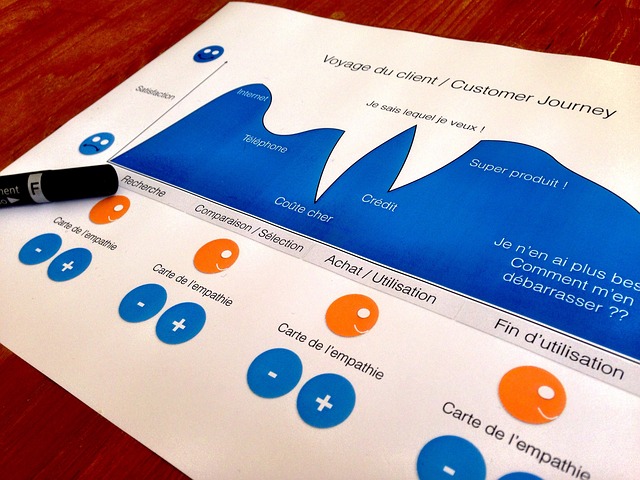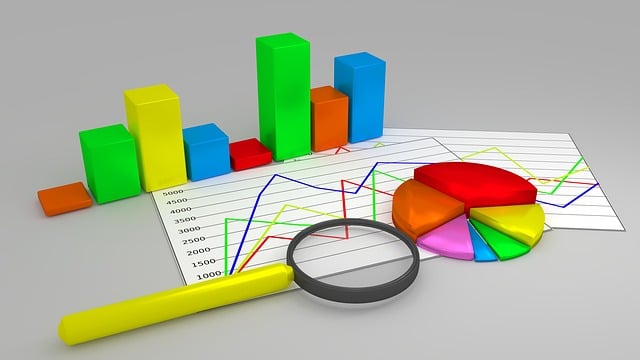A buyer journey is how your buyers will move towards a purchase – have a problem, evaluate solutions, make a decision.
It\’s not just for marketing, but also applicable to sales – new client acquisition as well as account growth (or account farming).
A buyer\’s journey is different from your B2B sales pipeline which is an internal process for sales management and reporting. e.g. prospect, lead, qualified, proposal, closed won or lost.
So everyone in client facing roles such as client partners must be conscious of their buyer\’s stage in the journey as they execute and direct their resources.
In this blog:
- What is a buyer journey? (and a subtle but important hint)
- How we can use AIDA?
- How to action your buyer\’s journey?
What is a Buyer Journey?
At its core, a buyer\’s journey is how a customer moves from awareness to decision.
A simple and powerful buyer\’s journey that I like to use is from HubSpot. It has been outlined here by Evalinator.
This popular journey has 3 stages:
- Awareness – exploring their problem or pain
- Consideration – looking at various available approaches to solve the pain
- Decision – have narrowed down to an approach and considering multiple solutions
These 3 stages are very easy to model, and map very well to HubSpot\’s inbound sales and content marketing process as well – draw a customer in with education, be top of mind, and then go in for closing.
There are other journeys such as the hierarchy of effects model. These have additional stages that also closely align with a strategic communications and advertising strategy.
- Awareness – what can we do to raise awareness of our product
- Knowledge – How can we improve the customers knowledge about us
- Liking – how do we create a positive perception in the customer\’s mind
- Preferences – how do we position superiority
- Conviction – how do we create an intention to buy
- Purchase – how do we inspire the customer to buy and close the transaction
The additional number of stages provide more clarity to the sales and marketing interventions. But they can also become more cumbersome to manage.
In addition, I\’d like to point out a subtle but important difference in how we think about the \”awareness\” stage. This stage is also about helping the customer understand their pain better, not simply making them aware of our brand. This according to me is a very big factor in content marketing as it creates a trust anchor with clients.
This take on the awareness stage is not new as I used this concept during my consumer engagement days at Amex and Citi. HubSpot popularized it and made it very accessible. I\’ve also written about this in my books under multiple topics such as \”the principle of external reinforcement\”.
The need for a strategic approach
Needless to say, a B2B sales journey is never a simple and linear process.
My working method is to think of the buyer journey holistically and examine our value proposition before we think of it as a marketing or content problem.
For example,
- How strong is the pain?
- Does our solution solve it well? What are the gaps?
- What are the alternatives?
- Do we need partnerships?
- Do we need integrations?
These questions can have a profound effect on sales conversions, and how we evolve our solutions and services.
No amount of marketing messaging or advertising can compensate for those shortcomings in the value proposition. So, a clearly defined buyer\’s journey and introspection helps with offer or product strategy too.
How does AIDA fit in?
The AIDA model was perhaps the very first model for mass communication designed in the late 1800s.
It was especially powerful in a world of mail order catalogs, door to door sales, and expensive mass marketing channels to reach consumers.
It has 4 stages:
- Attention
- Interest
- Desire
- Action
This is still the overarching model of how a buyer moves forward.
However, given our B2B journeys, I like to think of AIDA in another important way as well – it becomes our underlying communication or messaging strategy.
Think about it. In every stage of the buyer\’s journey, we need the user to take some action.
For example, a blog that helps the client understand their pain better wants the user to download an infographic or a checklist or sign up for a demo.
So, in my opinion, AIDA becomes a great way to structure every message.
- Attract with good, relevant headlines
- Build interest by sharing relevance
- Create a desire by sharing insights and painting a desirable future state,
- Include a strong CTA to spur the user to action.
So, that\’s how I see AIDA fit in with the B2B buyer\’s journey or model.
Even if you\’re not very good with words (I\’m not), it\’s equally important to know what the message should be. For example, what is keeping users up at night, what stage of the buyer journey are we targeting, what makes for a good CTA, is our offer of good quality, what are users interested in, how urgently, etc.
How to implement your buyer journey for demand generation?
Now that we\’ve seen what buyer journeys are, I hope you can appreciate the importance of knowing your customer.
Brute force tactics are unlikely to move the needle on sales and marketing unless we invest the time to know our customer and plan the actions consciously – especially for enterprise B2B cycles which are at least many months long.
Here are the 4 actions to take.
- Define your buyer persona – narrow it down. If you ever come up with \”our solution is relevant for many different types of stakeholders in different industries\”, then you haven\’t defined the persona well enough. There will be time to broaden your focus once you generate momentum, but if you are just starting out, then narrow it down to 1 or 2 personas.
- Understand the stages of the journey: Once you create a narrow buyer persona you can really drill down into understanding what they need during awareness and during consideration. Your insights will be specific. This is also when insights becomes harder to generate! You may actually need to speak with real customers instead of just using secondary research on the web.
- Multi-channel Marketing – Based on your persona and the topics, you can now derive which channels and mediums make most sense. For example, if your solution is for \”analytics in banking\”, then you know which events, publications, partners, and so on. A good persona gives you the power to create great marketing campaigns and assets. You can generate leads with relevant webinars, raise awareness with PR in the right places, and so on.
- Align sales – Now that you know how your buyers are thinking, it\’s fruitful to align sales with that model. Sales can now focus on the right prospects and help them with the right material that matches the stage customers are in. Once sales has that, they are also in a stronger position to close, or wait for the right time.
Next steps
I hope this post was useful in thinking about your buyer journey in context of your sales and marketing campaigns.
A buyer journey analysis helps both account growth (or account farming) and also the new client acquisitions process.
If you need to chat, just get in touch!
Good luck!



